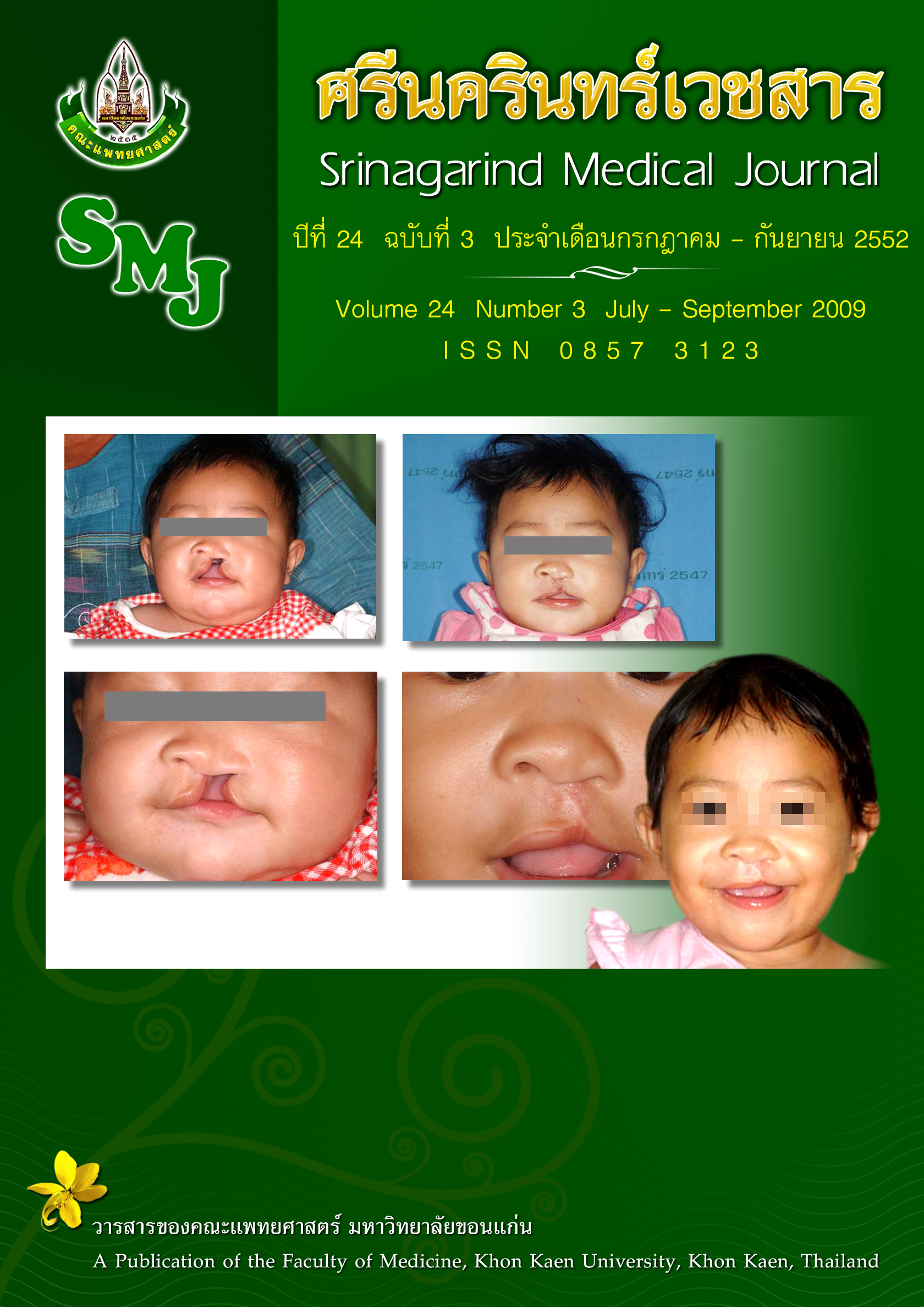Natural History of the Common cold with Respect to Day-care Attendance at a University Hospital in Khon Kaen, Thailand
บทคัดย่อ
Background and Objective: Srinagarind Hospital set up a pre-school day-care center to support working parents in the campus. However, some parents personally complained of frequent respiratory illnesses among their children attending day-care. This study was conducted to determine the incidence and natural history of common cold among children attending Srinagarind Hospital Day-Care Center, Khon Kaen University.
Methods: This was a one-year cohort comprising 90 children (with parental consent) assessed between August 2003 and October 2004. All of the respiratory symptoms and interventions of each child were recorded daily by day-care workers and parents on the weekends. The investigators checked for missing data every 2 weeks.
Results: The enrolled children, between 8 and 53 months of age (mean+SD; 31+0.9 months), suffered an average 12 colds per person-year. The majority (77%) had more than 8 episodes per year. The mean duration of each episode was 5 days (SD=5.4). Complications included sinusitis (12%) and otitis media (0.1%). The number of children with common colds peaked during the cold season (between November and February). The rate of inappropriate antibiotic therapy was 6%. ‘Being under 2 years of age’ was the primary risk factor for getting frequent colds (more than 8 per year; Odds ratio, 95% confidence interval; 12, 1.53-95.6).
Conclusions: This study demonstrates an increased frequency of upper respiratory tract infections among children attending a day-care center. Simple common colds are usually self-limiting and usually last not more than one week. The most common complication was sinusitis. Children attending day-care before their second birthday are at significant risk of getting frequent colds.
Key words: common cold, day-care attendance, natural history




